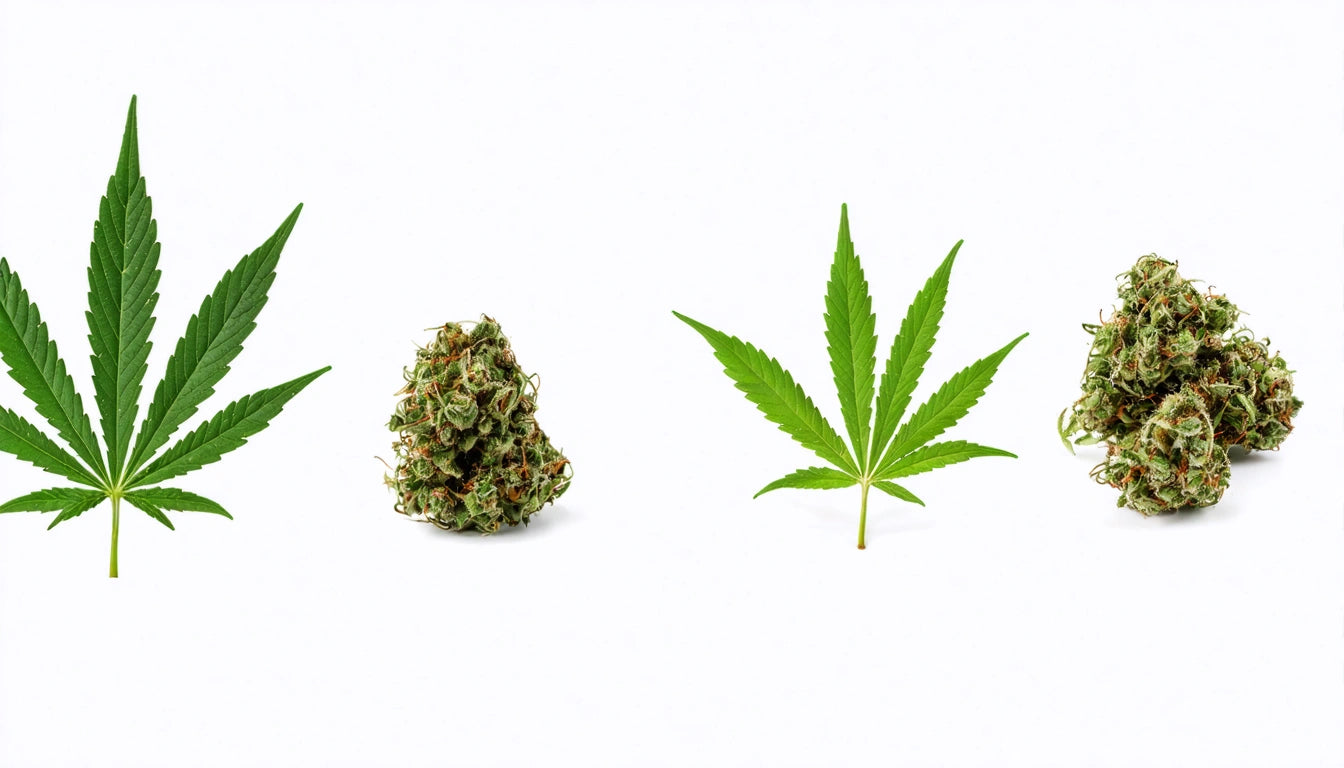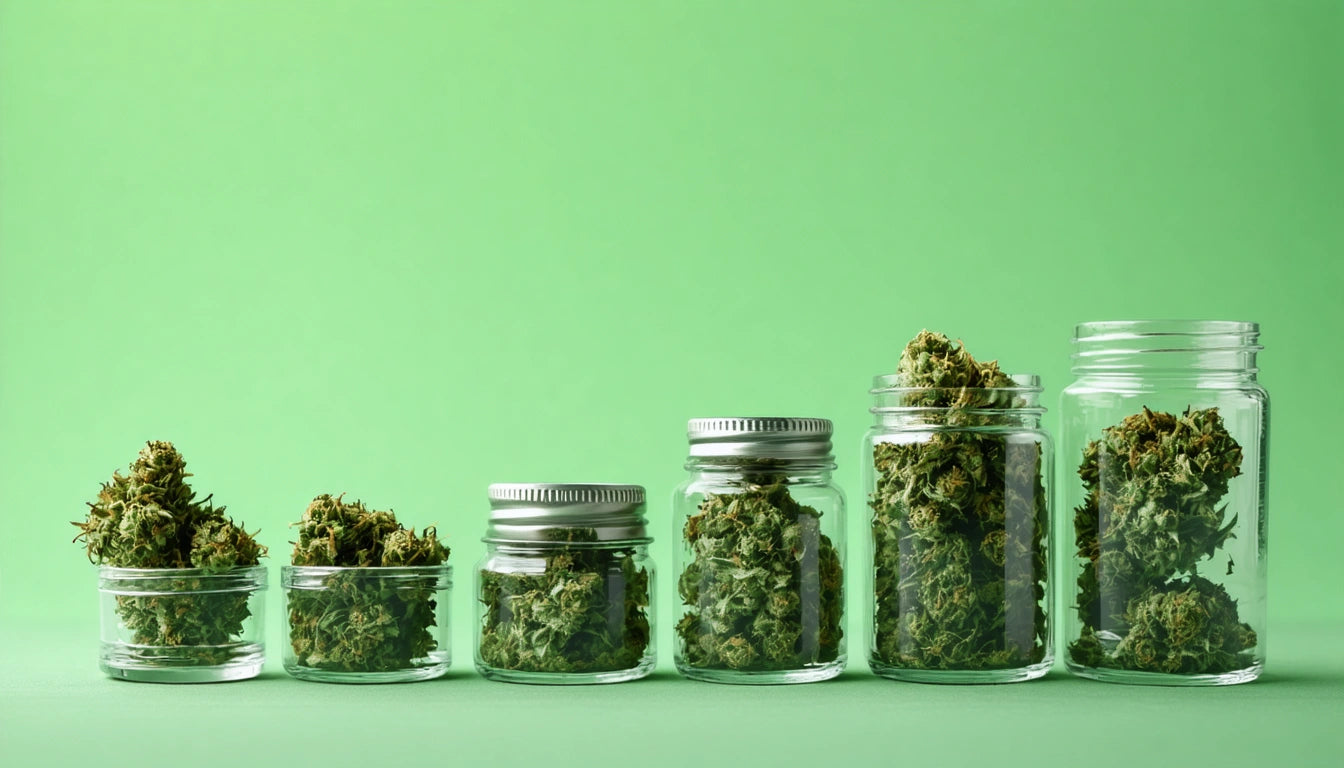Table of Contents
Understanding Cannabis Strains: Indica vs. Sativa
The cannabis industry classifies strains primarily as indica, sativa, or hybrid, with each category offering distinct characteristics and effects. While modern science has revealed that the indica-sativa dichotomy is more complex than originally thought, these classifications remain useful for consumers navigating product options. This guide explores the differences between these strain types and examines the classifications of popular varieties.
Indica vs. Sativa: Understanding the Basics
Traditionally, cannabis strains have been categorized based on their physical characteristics and effects. Indica plants are typically shorter and bushier with broader leaves, while sativa plants grow taller with narrower leaves. Understanding these characteristics helps both cultivators and consumers identify what to expect.
Beyond physical appearance, the effects associated with each type differ significantly:
- Indica: Often produces relaxing, sedative effects that affect the body more prominently
- Sativa: Typically delivers energizing, cerebral effects that stimulate the mind
- Hybrid: Combines characteristics of both indica and sativa in varying proportions
When working with various strains, having precise measurement tools for dosing and preparation becomes essential for both personal and commercial use, especially when dealing with potent varieties like RS11 or MAC 1.
Popular Strain Classifications: Indica, Sativa, or Hybrid?
Many consumers search for specific information about whether their preferred strains lean indica or sativa. Here's a breakdown of some popular varieties:
Predominantly Indica or Indica-Leaning Hybrids
- MAC 1 (Miracle Alien Cookies): Despite its balanced effects, MAC 1 strain is indica-dominant, offering relaxation with a creative mental boost.
- Motorbreath: A potent indica-dominant strain known for its strong physical effects and diesel aroma.
- GG4 (Gorilla Glue #4): An indica-leaning hybrid famous for its "glued to the couch" effect and resinous buds.
- Snowman: An indica-dominant hybrid with relaxing properties and a sweet, dessert-like profile.
Predominantly Sativa or Sativa-Leaning Hybrids
- AK-47: Despite its aggressive name, AK-47 strain is sativa-dominant, known for its uplifting and mentally stimulating effects.
- Point Break: A sativa-leaning strain that offers energetic effects with a tropical flavor profile.
- Black Jack: A sativa-dominant hybrid combining Black Domina and Jack Herer genetics for a balanced experience.
- ATF (Alaskan Thunder Fuck): A classic sativa strain renowned for its energizing and creative effects.
Effects and Usage: What to Expect from Different Strain Types
Understanding the effects of indica vs. sativa strains helps consumers make informed choices based on their desired experience and medical needs.
Indica Effects and Ideal Usage Scenarios
Indica strains like Snowball, Black Mamba, and First Class Funk typically produce:
- Deep physical relaxation and body-centered effects
- Potential relief from pain, muscle tension, and insomnia
- Sedative properties making them suitable for evening or nighttime use
- Potential appetite stimulation ("the munchies")
Sativa Effects and Ideal Usage Scenarios
Sativa strains like E85, RS11, and Area 41 often deliver:
- Cerebral stimulation and enhanced creativity
- Energizing effects suitable for daytime activities
- Potential mood elevation and focus improvement
- Social and conversational enhancement
Growing Characteristics of Indica and Sativa Plants
For cultivators, understanding the origins and growing patterns of different strain types is crucial for successful cultivation.
Indica Growing Traits
Indica plants, including varieties like Carbon Fiber, Sub Zero, and Devil Driver strains, typically:
- Reach heights of 3-6 feet (1-2 meters)
- Have shorter flowering periods (45-60 days)
- Produce denser, heavier buds
- Demonstrate greater resistance to colder climates
- Yield more per square foot due to compact structure
Sativa Growing Traits
Sativa plants, including varieties like The Fizz, High Octane, and Drip Station strains, generally:
- Grow tall, sometimes exceeding 12 feet (3.5 meters)
- Have longer flowering periods (60-90+ days)
- Produce lighter, airier buds
- Thrive in warmer, more tropical environments
- Require more space due to their height and spread
Beyond Classification: The Future of Cannabis Strain Categorization
The cannabis industry is evolving beyond the simple indica-sativa dichotomy toward a more nuanced understanding based on chemical profiles. Decoding the genetics of cannabis strains reveals that effects are determined more by:
- Cannabinoid profiles: The ratio and concentration of THC, CBD, CBG, and other cannabinoids
- Terpene composition: Aromatic compounds that influence both flavor and effects
- Individual body chemistry: How each person's endocannabinoid system responds to different compounds
This explains why strains like Don Mega, Pinnacle, and Wham can't be simply categorized as purely indica or sativa, as their effects may vary based on their specific chemical makeup and the individual consumer.
As cannabis research advances, consumers may soon select products based on specific cannabinoid and terpene profiles rather than traditional indica or sativa classifications, leading to more predictable and personalized experiences.











Leave a comment
All comments are moderated before being published.
This site is protected by hCaptcha and the hCaptcha Privacy Policy and Terms of Service apply.